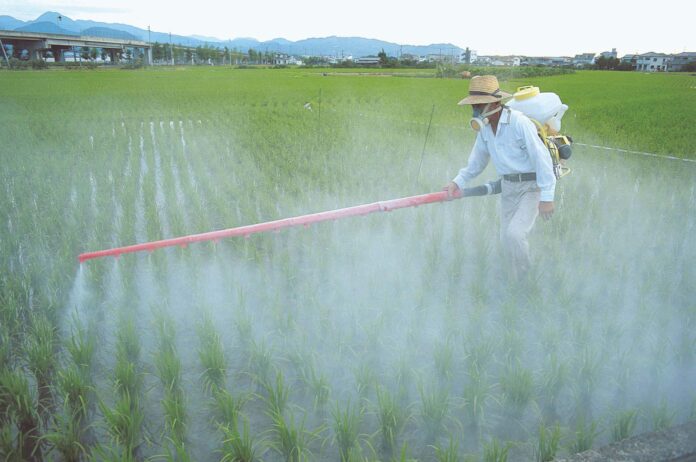Exponential and uncontrolled growth of population forced the industrial revolution to feed the massive population in the world,. No doubt the world has seen huge and unprecedented economic development but this uncontrolled expansion simultaneously depleted every sphere of environment including the hydrosphere, geosphere, and lithosphere. as well as the atmosphere, and generating huge amounts of waste from all segments.
When this wastes cross the assimilation capacity of the environment, it creates pollution. Hence poison is spread everywhere, as a result we are facing huge health and environmental consequences. The Pakistani economy is basically semi-industrialized with one of the well designed integrated agricultural sectors. Globally Pakistan is ranked the 23rd largest economy in terms of GDP with the world’s largest irrigation system, Eighty percent of its total 23.3 million hectares are cultivated and approximately 40 percent of the country’s labour force is associated with the agricultural sector, which contributed 18.5% of the country total GDP.
A large portion of the population is directly or indirectly associated with agriculture and their main source of living is totally dependent on this sector. The major crops that Pakistan produced are wheat, rice, sugarcane, cotton, mangoes, oranges and dates, other fruit and vegetables. Beside these major crops Pakistan possesses high potentialities to grow almost all types of sub-tropical, tropical, garden and field crops in abundance.
Exponential growth of population leads the country to feed more than 220 million people with a growth of 1.95% annually. As population increase, more stress develops on the land to produce more food to meet the demand of millions. The increasing demand can be met by development of new and better crop protection measures. For better crop yield and to protect crops from insects, unwanted herbs, and pets, the indiscriminate usage of synthetic pesticides has been carried out extensively since 1954 after the Locust outbreak. These poisons were used for the benefit of humans, so they were called economic poisons. In 2019, the crop protection poison market was valued at $220 million and with forecast to witness a Compound Annual Growth Rate of 8 percent, it is forecast to cross the value of $350 million by 2025.
Wheat contributes 37 percent of total food energy in Pakistan, hence it acts as a driver for the crop protection poison market. Tjhe flourishing of textile industry also increased pesticide consumption in Pakistan. About 90 percent of pesticides are used in cotton fields, even several compounds which are banned in the rest of the world, are still used in Pakistan. These poisons consists of various chemical compounds used as insecticides, herbicides, fungicides, nematicides, rodenticides as well as fungicides and growth regulators
Pesticides consist of various compounds for wide range and applications such as herbicides, nematicides, insecticides, molluscicides, fungicides, rodenticides and plant growth regulators. Pakistan used more than 85 percent insecticides, 6-7 percent herbicides and fungicides, whereas the world consume 56 percent herbicides in its total pesticides. Insecticides are classified into four main classes, organochlorine, organophosphorus, carbamates and pyrethroids. Among these classes, organochlorines which contained DDT, BHC and Dieldrin are considered as persistent pesticides because they are very stable, cannot be broken down and remain in the environment for a very long time. The organophosphorus group is less persistent. This group contains methyl parathion, endosulfan, malathion, diazinon, monocrotophos, dimethoate and chlorpyrifos. The third group is based on carbamic acid. One of the least persistent and latest developed group belongs to pyrethroids, deltamethrin, fenvalerte and cypermethrin, which are synthetic pyrethroids. Although herbicide usage in Pakistan is comparatively less than insecticides but it also poses a danger to the community. Diuron, paraquat, diquat, atrizine, phosalon, 2,4-T , 2,4-D and metametron are the major herbicides used in different parts of Pakistan, Besides these, aluminum phosphate, cacumin, zinc phosphate, bromadiolone, strychnine warfarin and brodifacoum are also used to control vertebrate animals.
A strict registration and regulation system on production, distribution, and usage of pesticides should be implemented, and there should be a strict monitoring system. Locally, production of hazardous pesticides should be regularized and import of pesticide should be controlled. Effective result-oriented research work must be carried out in order to develop cost-effective and eco-friendly methods for sustainable removal of contaminants from the environment.
Depending on exposure, the toxicity of pesticide can be acute or chronic. Acute toxicity can cause lethal or harmful effects on the first time of inhalation, injection or dermal contact, while its severity can vary by the type of group, contact time and exposure dosage. The symptoms can be observed shortly after exposure or within 48 hours. They can be cough, sore throat, respiratory tract infection, eyes and skin irritation, headache, extreme weakness, vomiting, nausea, seizures, loss of consciousness or death. Low doses of pesticide over time can also cause harmful effects on health and cause illnesses like asthma, Parkinsonism, hyperactivity disorder, anxiety and several types of cancers. Pesticides are normally endocrine disruptors, and imbalance hormones which leads to abnormal function of hormones and can cause reproductive and growth dysfunction in children and adults even at a very low concentration.
In adults the reduction of semen is commonly observed due to exposure of endocrine disruptors, hence genital dysfunction, prostate cancers, decreased fertility, ovarian cysts, early puberty, breast cancers, uterus anomalies, multiple complications during pregnancy, neurological disorders, obesity, diabetes, obesity hypothyroidism and thyroid cancers are some disorders observed. Sometime pesticides produced “Coktail effects”: an alteration or enhancement of chemical effects when exposed with very low level with one or more chemicals, combine effect which cannot be understood by physicians. Currently there is no regulations to focus on this issue.
In Pakistan, usage of pesticide in Panjab is about 88 percent, Sindh 8.2 percent, Khyber Pakhtunkhwa 2.8 percent and Baluchistan 0.76 percent. The front line exposers of pesticides are usually farmers followed by consumers. According to reports, more than 10,000 Pakistani farmers are poisoned due to indiscriminate use of different pesticides, specially in cotton-growing areas. This is due to less awareness of methods of application, dosage and the lack of proper guidance. Beside human loss, these pesticides become the major source of contamination of soil, water and environment and the food chain.
Farmers are routinely exposed to high levels of pesticides, usually much greater than consumers. One of the main reasons for the high level of exposure among farmers is that they usually focused on the efficacy of a pesticide rather than ts safety.
Other factors including ill planned and improper non-recommended dose, mixing of different pesticides, carelessness while using of nozzles, poor knowledge regarding wind speed, direction, suitable time and crop stage while applying pesticides, improper disposal, negligence of guidelines and failure of regulatory authorities, are the main factors behind the high level of exposure as well as presence of residues in food. All these factors maximize the risk of exposure especially in third world countries.
These pesticide residues not only causes severe health effects on farmers and consumers but also endangers other forms of life present in the biosphere. Pesticide residues higher than permissible level have been detected in various tissues, fat samples, blood serum of humans in Pakistan. There is a long history of reported deaths due to pesticidal exposure in Pakistan, but on the other hand, unreported or unrecognized deaths might be huge many. Recently in Sindh, hundreds of thousands of fishes were found dead in the Sunhari Canal in Khairpur Nathan Shah, which clearly indicated the higher level of pesticide present in water bodies
To overcome this situation and to reduce toxic health effects, one option is to stop the use of banned pesticides (organochlorinated) in Pakistan and to carry out risk assessment of edible commodities by establishing effective and result-oriented residue monitoring of pesticides in food commodities.
Unfortunately little attention has been paid to calculate residues on food under best agricultural practices . Higher pesticide residue in food may also be due to the absence of updated food laws in Pakistan. There is a great need to monitor pesticide residue on a regular basis to control the use of pesticide and ensure consumer safety. Monitoring should be compulsory in Pakistan to comply with the Stockholm Convention and the implications of the World Trade Organization.
On the brighter side, some research institutes are constantly working on monitoring residue levels in food commodities. Several labs have been established in different provinces in order to effectively monitor pesticide residue, but there is great need to ensure the sustainability of these analytical laboratories by providing scientific and technical support through chemical analysis of residue in food. There is an urgent need to estimate the pesticide load on the environment as well as population. Specific training specially in toxicology evolution should be provided to the scientific community and general training on the safe use of pesticide to farmers should be conducted effectively on a regular basis.
A strict registration and regulation system on production, distribution, and usage of pesticides should be implemented, and there should be a strict monitoring system. Locally, production of hazardous pesticides should be regularized and import of pesticide should be controlled. Effective result-oriented research work must be carried out in order to develop cost-effective and eco-friendly methods for sustainable removal of contaminants from the environment.
























NICELY WRITTEN 🙂 AN IMPORTANT ISSUE GOVERNMENT SHOULD TAKE STEPS
Great work Mr, fayyaz i’m really impressed with your content and topic.